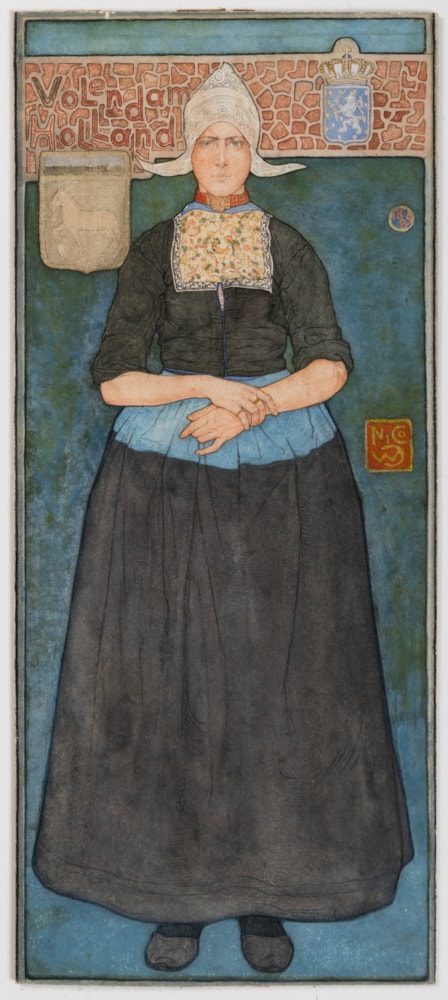
Nico JUNGMANN
Amsterdam 1872 - London 1935
Biography
Apprenticed to a decorative church painter in Amsterdam at the age of twelve, Nicolaas (‘Nico’) Wilhelm Jungmann was trained as a muralist and gained admittance to the Rijksakademie four years later. In 1893 he earned a scholarship from the Dutch artist’s society Arti et Amicitiae to travel to London, where he settled and became naturalised as a British citizen. Active as a landscape and figure painter, as well as a decorator and book illustrator, Jungmann (whose surname was often spelled Jungman in England) travelled throughout Holland, Belgium, France and Italy. In March 1899 an exhibition of fifty of his works at the Dowdeswell Gallery in London firmly established the artist’s reputation in England. As one review of the exhibition, which was entitled Picturesque Holland, noted, ‘The collection of drawings and frescoes by M. NICO JUNGMANN recently shown at the Dowdeswell Gallery has a curious interest, as demonstrating technical ingenuity of a pleasantly unusual kind. The artist sees things with a strongly developed preference for certain aspects, and paints them according to the rules of a decorative convention of his own creating. The results are occasionally surprising, but never incapable and never commonplace; so that the show, despite its dominating mannerism, was welcome as being agreeably unlike anything that had been seen before. It was a new sensation, and a sound one; therefore it was a success.’ Two further exhibitions, each likewise entitled Picturesque Holland, were held at the same London gallery in 1900 and 1901.
Jungmann made his debut at the Royal Academy in 1897 and continued to show there until 1923, while also sending his works to the Grosvenor Gallery and the Royal Society of British Artists, and to exhibitions in Brussels, Paris and Munich. A painter of genre scenes, townscapes, peasant portraits and still life subjects, Jungmann also illustrated topographical guides to Holland, Norway and Normandy, published in 1904 and 1905. In 1916, during when the First World War, Jungmann was returning from Holland to Britain when he was arrested by the Germans and, as a British subject, interned at the Ruhleben civilian prison camp, not far from Berlin. (A number of works painted during this period are today in the collection of the Imperial War Museum in London.) In his later years he painted Alpine subjects, and also developed a reputation as a fine restorer of Old Master paintings. At the artist’s death in 1935, the politician and patron of the arts Lord Lee of Fareham noted in an obituary that ‘The world of art is distinctly poorer by the death of Nico Jungman, whose talents, while not so widely known as they deserved, were, in certain directions, of an exceptionally high order and of real service to his generation. As a painter of modern pictures he was perhaps not in the first rank, but his work was always scholarly and distinguished by masterly drawing and a fine sense of atmosphere.’


